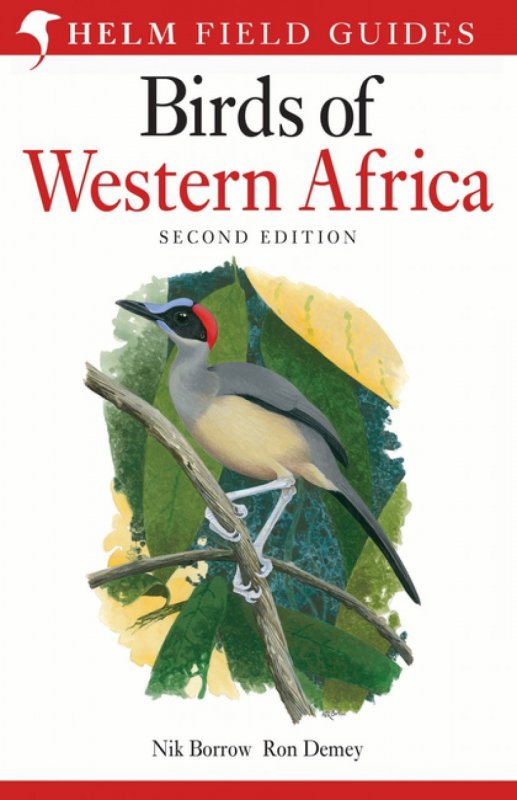
Publisher: Christopher Helm, London
Publication Year: 2014
Binding: 1
Page Count: 592
ISBN Number: 978-1-47290-568-0
Price: £40.00
Birds of Western Africa
Birds of Western Africa surely covers one of the largest and most biogeographically varied areas of any field bird guide. Stretching from the Cape Verde Islands, up to 830km west of the Senegalese coast, south and east to Congo and the Central African Republic, the second edition of this Helm Field Guides publication sets itself an ambitious target.
Covering more than 1,300 species, it comes as no surprise that this isn’t really a pocket field guide, weighing in at more than 500g. Fortunately for the purposes of my field test in Nigeria, it does fit snugly into a 10x42 binoculars case, making it a practical field companion. The introduction and ‘How to use’ sections are concise and clearly laid out, ensuring that 530 of the book’s 592 pages are dedicated to the birds themselves. The species accounts and plates have plenty going for them; the maps are of a reasonable size and, like the text, are packed with information, while most of the illustrations are given enough room not to feel overcrowded.
In an era where the standards have been set by the Collins Bird Guide, some of the illustrations fall short, such as those of the Calandrella larks and Acrocephalus warblers. Others, like those of the coucals, seem almost oversaturated, making it difficult to resolve the details. The majority of illustrations are those used for Birds of Western Africa (2001) and it is a shame that the opportunity was not taken to update some of them.
Taxonomy follows the Howard & Moore Checklist (4th edition) for non-passerines and ‘information made available to the authors’ and the Howard & Moore Checklist 3rd edition for passerines. While there are clearly benefits to both the authors and the reader in maintaining consistency with the previous edition, use of a more up to date and globally transferrable taxonomy such as IOC would have reduced confusion.
Finally, there is a laudable plea in the Introduction for “interesting observations buried in notebooks or unpublished reports”. The authors go on to recommend that “relevant data be submitted to a refereed journal for publication”. This is perhaps a little high-brow for the ‘average’ visiting or local birdwatcher. It would have been great to see mention something more accessible to all birdwatchers: the value of submitting all records to an online global system for bird records, such as BirdTrack!
Book reviewed by Nick Moran
Buy this book




Share this page